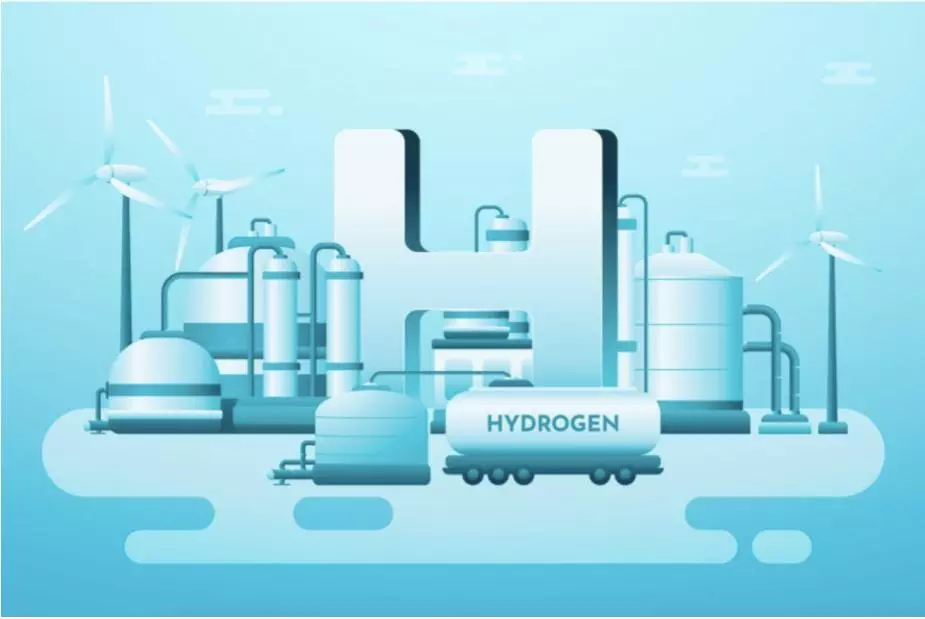
Gujarat set to launch Hydrogen Valley: What is it, why is it important?

Gujarat has taken a step towards developing the Hydrogen Valley Project by holding the first stakeholder consultation meeting on April 21. The meeting was jointly organised by iCreate in collaboration with the Science and Technology Department and the Office of the Principal Scientific Adviser to the Government of India.
iCreate is a “non-academic institution dedicated to fostering startups based on tech innovation into successful businesses”. It is supported by the Centre as well as the Gujarat government to facilitate “Next Generation Entrepreneurship”.
Opinion: Green flag for green hydrogen sets India on the right path
So, what is the Hydrogen Valley Project and why is it significant?
What is a hydrogen valley?
A hydrogen valley is defined as a geographical area where hydrogen serves more than one end sector or application in mobility, industry, and energy. It can be a city, a region, an island, or an industrial cluster. Estonia recently became the first country to establish a nationwide hydrogen valley.
A hydrogen valley is designed to cover all steps in the hydrogen value chain — from production to storage to transport to distribution to various off-takers.
The Hydrogen Valley Platform is a global initiative to optimize hydrogen demand and supply by onsite generation and utilisation. The idea is to utilise the renewable resources effectively in water-excess areas with geographical identity.
Also read: Reliance ties up with Olectra to unveil Hydrogen Bus, a carbon-free public transport initiative
Importance of hydrogen valleys
Reports says that the demand for hydrogen has grown more than threefold since 1975 and it continues to rise. Among industries, oil refining, ammonia production, methanol production, and steel production dominate hydrogen use today.
However, hydrogen production is almost entirely done by fossil fuels. While 6% of global natural gas goes into hydrogen production, 2% of global coal serves the same purpose. Hydrogen production is responsible for around 830 million tonnes of carbon dioxide production per year.
Besides the environmental factor, producing hydrogen from natural gas is expensive, too, especially for a country like India that imports gas. The high gas import prices makes for higher hydrogen production costs as well.
However, hydrogen can be extracted from biomass and water, too. Thus, many countries are now committed to producing clean hydrogen. India has also committed to setting up three clean hydrogen valleys within its territory by 2030.
Also read: Centre clears ₹19,744Cr green hydrogen project; to invest ₹8L Cr in first phase
The Gujarat project
The Gujarat Hydrogen Valley Project is a part of India’s efforts to develop clean hydrogen valleys by 2030 and reduce the emissions intensity of its GDP by 45% by that time.
The project will promote research on novel hydrogen technologies while building capacity for its production, distribution, and use in a timely and cost-effective manner.
It is also expected to create opportunities for stakeholders, particularly in the MSME sector, and generate new jobs.
The project has immense potential to power the future of India’s growth while contributing to global climate action goals.
What happened at the meeting?
The Science and Technology Department had earlier called for proposals for the development of Hydrogen Valley Platforms in India.
At the meeting, the guidelines for setting up Hydrogen Valley Innovation Clusters (HVICs) and the role of research and innovation in accelerating the hydrogen economy were discussed.
Also read: IOC to set up green hydrogen plants at all refineries
The meeting attracted participation from various companies, state PSUs, and R&D institutions. Among the private companies present were Reliance Industries, Welspun Enterprises, Essar, Adani Group, Hypower Systems, ArcerlorMittal Nippon Steel India, and MG Motor India.
Among the state PSUs that attended the meet were Gujarat Narmada Valley Fertilizers & Chemicals, Gujarat Alkalies and Chemicals, Gujarat Energy Development Agency, and City Gas distribution company Charotar Gas Sahakari Mandali Limited.
There were also R&D institutions like CSIR – Central Salt and Marine Chemicals Research Institute (CSMCRI), Gujarat Energy Research and Management Institute (GERMI), and IIT-Mandi.
Now, the hope is for the submission of expressions of interest to the Science and Technology Department for the preparation of a detailed project report for setting up the Hydrogen Valley Innovation Cluster in Gujarat.
(With agency inputs)


